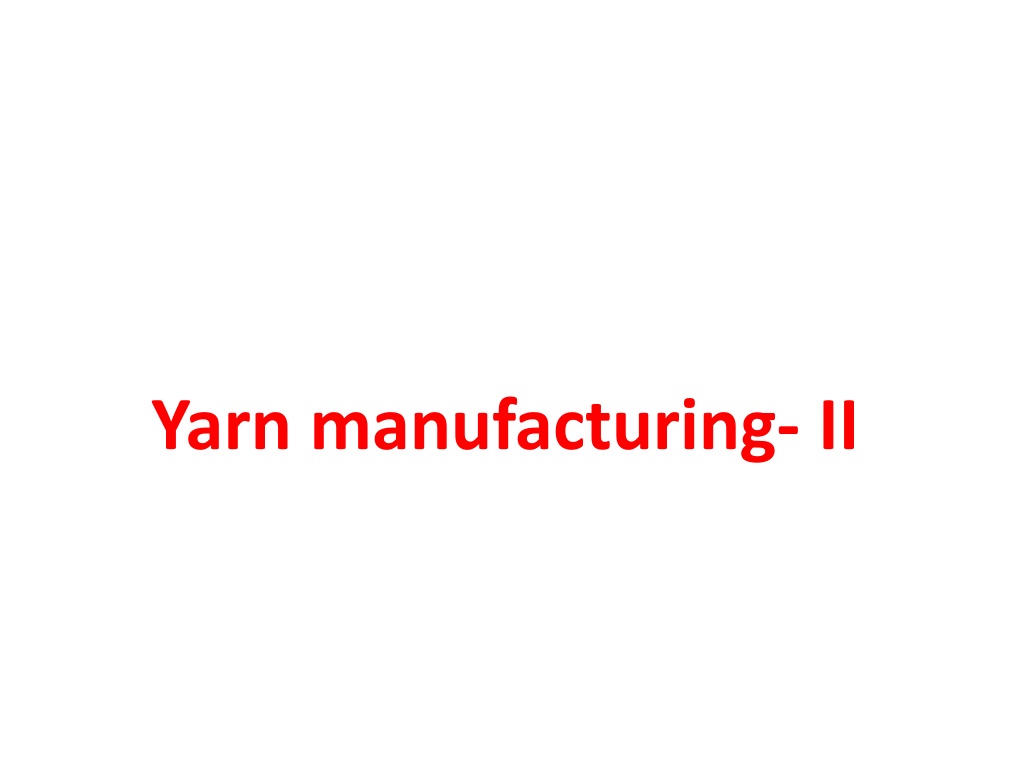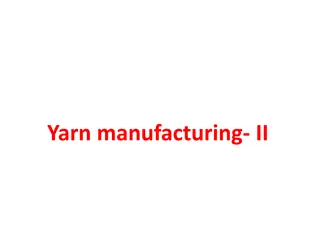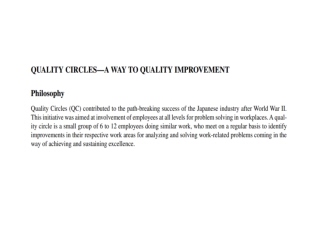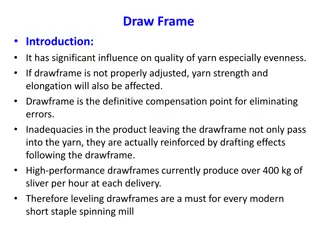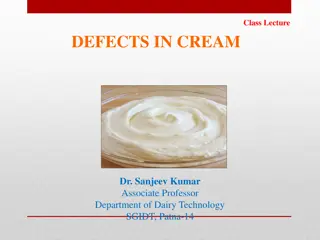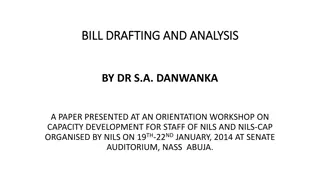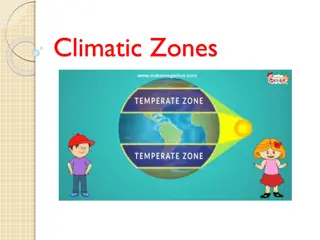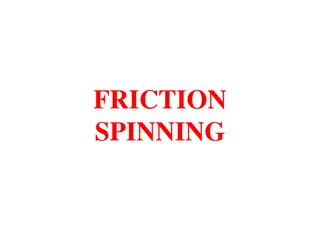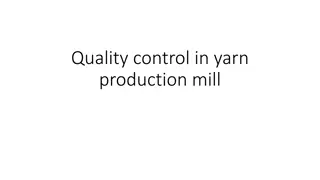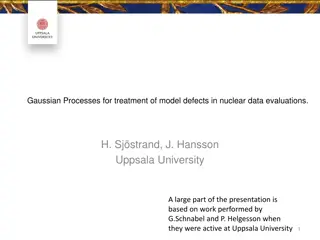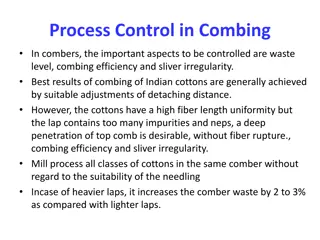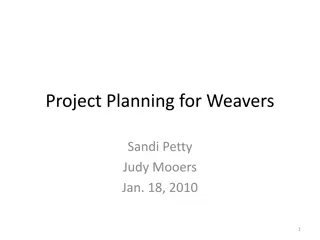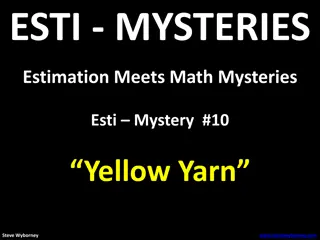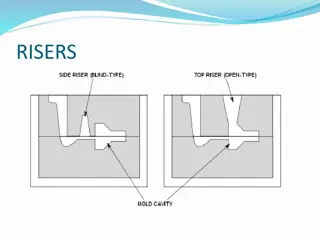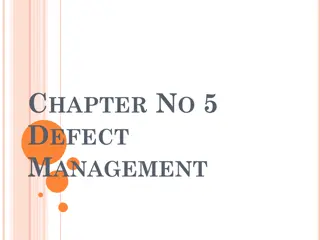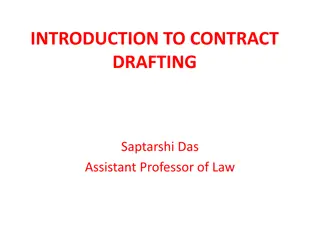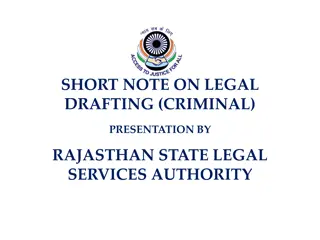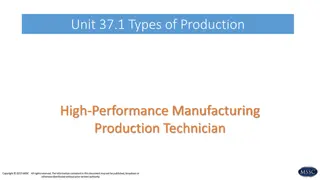Understanding Yarn Manufacturing: Processes and Defects in Drafting Zone
Yarn manufacturing involves various processes like drawing, doubling, and drafting to improve fiber alignment and quality. Defects in the drafting zone such as roller slip and drafting wave can impact the yarn production process. Roller setting plays a crucial role in maintaining the correct nip-to-nip distance for optimal results. Modern drafting systems like MDS have evolved to enhance efficiency in the manufacturing process. Electrical and mechanical stop motions ensure operational safety in yarn manufacturing equipment.
Download Presentation

Please find below an Image/Link to download the presentation.
The content on the website is provided AS IS for your information and personal use only. It may not be sold, licensed, or shared on other websites without obtaining consent from the author. Download presentation by click this link. If you encounter any issues during the download, it is possible that the publisher has removed the file from their server.
E N D
Presentation Transcript
Object of draw frame Drawing and doubling of the card slivers and thereby improve uniformity and straightening of fibres. Drafting of card slivers and thereby improve parallelisation of fibres. Formation of drawing slivers Passage of draw frame There are two passage of draw frame a) Breaker b) Finisher
Defects in drafting zone There are two defects - a) Roller slip- Bottom rollers are moved directly by the motor which is positively driven, top rollers are driven by the bottom rollers with the frictional contact of fibre layers and which is negatively driven. Bottom rollers gives motion to the fibre layer first and it transmits to the top rollers. During transmission of the motion, the surface speed of the top rollers reduce than bottom rollers. This fall of surface speed of top rollers is called roller slip. b) Drafting wave- When the fibre moves through the drafting zone, a wave like formation is seen between first and second rollers, which is called drafting wave. This drafting wave happens due to loose second top roller and bulkiness of the fibres.
C B A
Roller setting Nip to nip distance of the rollers is called roller setting. Roller setting is done as per staple length of the fibre. Front zone:- effective length +3mm Middle zone:- effective length +6mm Back zone:- effective length +9mm
Modern drafting systems (MDS) Before introduction of MDS, the conventional drafting system is named as graduated drafting system which is 4/4. In this drafting system, draft is increased gradually from back zone to front zone. Draft is like 1.2, 1.7, 2.95 respectively which is equal to 6.02 (1.2x1.7x2.95). MDS are- 1. 3/4- made by german firms eg, Inglostadt, spintex, zinser. 2. 4/5- it is used on the whitin (USA) draw frames. 3. 3/5- made by Rieters (Switzerland) similar to 4/5. 4. 3/3- it is modification of graduated drafting system 4/4. 5. 2/2- it is used in post comber small draw frame drafting system.
Electrical Stop motions 1. Back stop motion-this stops the machine when there is any sliver break at the back or if any feeding can becomes empty. 2. Front stop motion- this stops the machine when there is a top roller lapping or break in the web. 3. Full can stop motion- this stops the frame when the delivery can is full.
Mechanical stop motions Mechanical stop motions are those when broken gear and torn out belts are changed during running condition. Performance of draw frames- 1. Control of sliver hank of finisher draw frame by wrapping test. Sample length is 5 yards. CV % is 1.5- 4.5. 2. Unevenness of sliver (U%) is 4.5-5 in case of cotton fibre. 3. Efficiency of draw frame it depends upon front roller speed and hank of the finisher sliver which is around 75%.
Carding Object of carding- 1) To loosen the fibres from the fibre tufts. 2) Opening of the fibres up to individual state. 3) Cleaning of the fibres by extracting sand, dust and lead particles etc. 4) The fibres are oriented. 5) To convert the blow room lap into round strand of loose, soft cotton sliver.
Principle/theory of carding The licker-in, cylinder, doffer and flats of carding machine are mounted by wire points. The fibres are opened and cleaned by the combing action of wire points. When the fibres pass across the flat wire and cylinder wire points, fibres are pulled apart by the cylinder wire points from the flat wire points. In this case, the direction of the wire points of flat and cylinder exist as points against points, direction of the movement of flat and cylinder is same. The flat speed is low than the cylinder speed. That means, the upper surface is flat and lower surface is cylinder. With these specifications, fibres are opened and cleaned thoroughly up to individual state. This action is called carding action.
FLAT WIRE POINTS CYLINDER
Card clothings There are two types of card clothing s- 1) Flexible card clothing- this clothing (wire points) is generally mounted in low production card (conventional). 2) Metallic card clothing- this clothings are generally mounted in high production or modern card. Advantages of metallic card clothing- 1) It helps to increase the production. 2) There is no need of frequent grinding. 3) Stripping waste is practically nil. 4) Efficiency is high. 5) It is generally used in modern card. 6) The usual variation in carding waste is eliminated. 7) There is considerable saving in labour cost.
Disadvantages of flexible card clothing 1) 2) 3) 4) Heel and toe arrangement This arrangement is being maintained in whole of the fillets, between cylinder and flat wires. The heel and the toe arrangement of the flat helps in allowing every individual flat/top to work against the fibres gradually because of the wider space at the point where the fibres enter into cylinder and kept closer setting when the fibre emerge out from the cylinder. The idea of maintaining this arrangement is to avoid too drastic action against the fibres being carded between the cylinder and the flats. Speed of different parts of carding is reduced. Frequency of stripping is high. Generation of waste will be high. Production is less.
Card draft Draft is the mechanical force/process by which the material can be thinned or attenuated without breaking it s continuity. The total draft employed in carding are much higher for cotton processing than synthetic fibres. The usual range of draft is from 80-220. Average draft is about 100.
Card draft formulae Draft = Wt. per yard feed\ wt. per yard delivery = hank delivered\hank fed = surface speed of delivery part\surface speed of feeding part
Types of draft Actual draft/resultant draft Mechanical draft- This draft is the amount of reduction which must result from the speed of the delivery rollers and feed rollers after allowance has been made for the reduction due to waste removal. Mechanical draft= length delivered\length fed = surface speed of delivery\surface speed of fed
RELATION BETWEEN AD & MD ACTUAL DRAFT= MECHANICAL DRAFT X 100\ 100 - WASTE% DRAFT CONSTANT= TOTAL DRAFT X DRAFT CHANGE PINION.
CARD SLIVER DEFECTS 1) 2) 3) 4) 5) These all defects are due to improper setting between the different parts of carding and damaged wire points and improper maintenance. Because card wire points are being grinded time to time as and when the sharpening of wire points are required. Cloudy Web Nappy Web Hole in Web Web Sagging Bad selvedge.
CARDING MAINTENANCE 1) Half Setting 2) Full setting 3) Over hauling 4) Semi overhauling 5) Grinding of wire points 6) Stripping of wire points Apart from these there should be schedule , preventive and corrective maintenance oin running industries.
